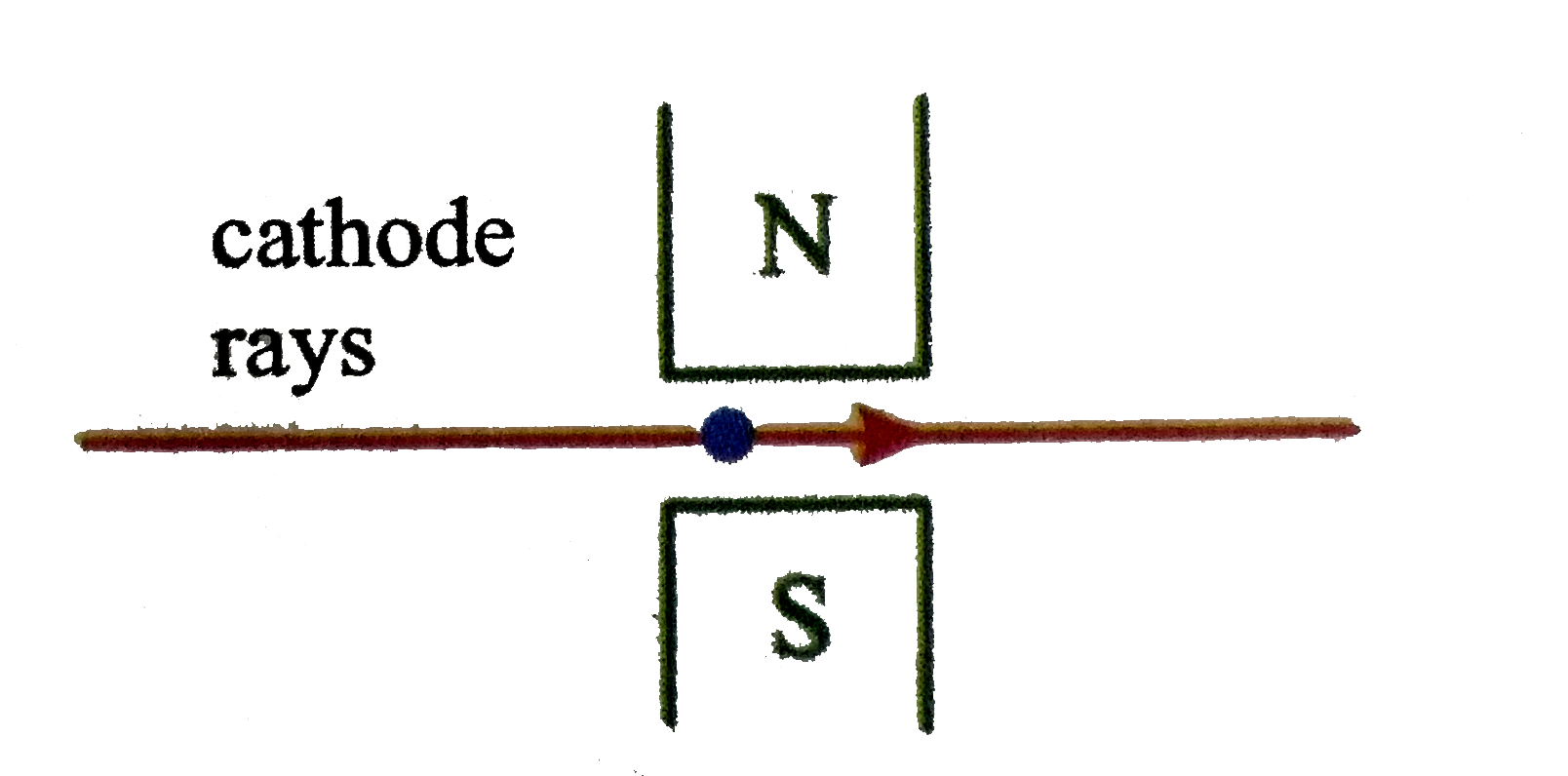When a gas is introduced between the pole-pieces of a magnet, it spreads at right angles to the magnetic field. The gas is
paramagnetic
ferromagnetic
Diamagnetic
non-magnetic
The correct Answer is:C
To solve the question regarding the behavior of gas when introduced between the pole pieces of a magnet, we can analyze the situation step by step.
1. Understanding the Magnetic Field:
- A magnet creates a magnetic field around it, which has a specific direction from the north pole to the south pole. This field influences charged particles and certain materials.
Hint: Remember that magnetic fields have both direction and magnitude, and they can affect the motion of charged particles.
2. Introducing the Gas:
- When a gas is introduced between the pole pieces of a magnet, we need to consider the nature of the gas. Gases are typically made up of neutral particles, but they can become ionized or have charged particles under certain conditions.
Hint: Think about how gases behave in the presence of magnetic fields, especially in terms of their charge and motion.
3. Behavior of the Gas:
- The question states that the gas spreads at right angles to the magnetic field. This behavior is indicative of the Lorentz force, which acts on charged particles moving in a magnetic field. The force is perpendicular to both the velocity of the particles and the magnetic field direction.
Hint: Recall the right-hand rule for the Lorentz force, which helps determine the direction of the force acting on a charged particle in a magnetic field.
4. Conclusion on the Nature of the Gas:
- Since the gas spreads at right angles to the magnetic field, it suggests that the gas contains charged particles or ions that are affected by the magnetic field. This behavior is characteristic of a plasma or ionized gas.
Hint: Consider what types of gases can be ionized and how they would behave in a magnetic field.
Final Answer:
The gas is likely to be an ionized gas or plasma, as it spreads at right angles to the magnetic field due to the influence of the Lorentz force acting on charged particles.
- A magnet creates a magnetic field around it, which has a specific direction from the north pole to the south pole. This field influences charged particles and certain materials.
- When a gas is introduced between the pole pieces of a magnet, we need to consider the nature of the gas. Gases are typically made up of neutral particles, but they can become ionized or have charged particles under certain conditions.
- The question states that the gas spreads at right angles to the magnetic field. This behavior is indicative of the Lorentz force, which acts on charged particles moving in a magnetic field. The force is perpendicular to both the velocity of the particles and the magnetic field direction.
- Since the gas spreads at right angles to the magnetic field, it suggests that the gas contains charged particles or ions that are affected by the magnetic field. This behavior is characteristic of a plasma or ionized gas.
The gas is likely to be an ionized gas or plasma, as it spreads at right angles to the magnetic field due to the influence of the Lorentz force acting on charged particles.
Topper's Solved these Questions
- MAGNETISMBook:TARGET PUBLICATIONChapter:MAGNETISMExercise:CRITICAL THINKING
Explore 24 Videos
- MAGNETISMBook:TARGET PUBLICATIONChapter:MAGNETISMExercise:COMPETITIVE THINKING
Explore 49 Videos
- MAGNETIC EFFECT OF ELECTRIC CURRENTBook:TARGET PUBLICATIONChapter:MAGNETIC EFFECT OF ELECTRIC CURRENTExercise:EVALUATION TEST
Explore 19 Videos
- MODEL QUESTION PAPER Book:TARGET PUBLICATIONChapter:MODEL QUESTION PAPER Exercise:MODEL QUESTION PAPER -II
Explore 47 Videos
Similar Questions
Knowledge Check
When a metallic plate swings between the poles of a magnet
Ano effect on the plateBeddy currents are set up inside the plate and the direction of the current is along the motion of the plateCeddy currents are set up inside the plate and the direction of the current opposes the motion of the plateDeddy currents are set up inside the plateA substance, when inserted between the poles of a magnet, is pushed out it is
AdiamagneticBparamagneticCferromagneticDnone of theseA small rod of bismuth is suspended freely between the poles of a strong electromagnet. It is found to arrange itself at right angles to the magnetic field. This observation establishes that bismuth is
ADiamagneticBParamagneticCFerromagneticDAntiferromagnetic
The pole pieces of the magnet used in a pivoted coil galvanometer are
View SolutionThe pole pieces of the magnet used in a pivoted coil galvanometer are
View SolutionCathode rays are made to pass between the poles of a magnet as shown in figure. The effect of magnetic field is

View SolutionElectron beam is made to pass between the poles of a magnet as shown in figure. The effect of magnetic field is
 .
.
View SolutionAt magnetic poles of earth, angle of dip is
View Solution

